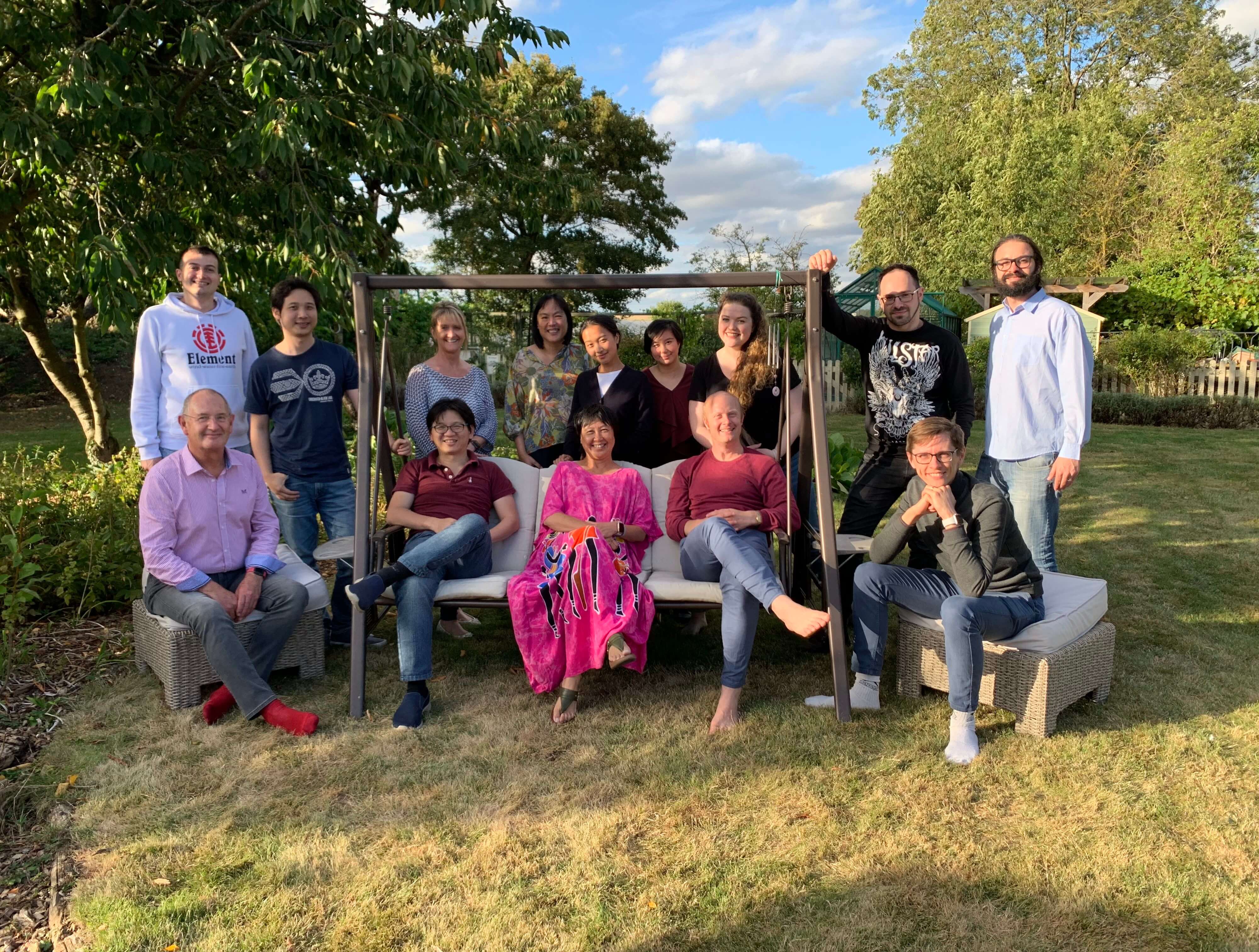How do we most effectively send satellites into space? And how do we make the best use of the volume we have in rocket launchers?
Spaceoneers spoke to Mike Lawton, CEO and Founder of Oxford Space Systems, an early-stage space company in the UK that is designing and building light, less complex and cost competitive deployable structures for space. With their novel unfurlable technology such as their AstroTube™ boom, they’re providing highly scalable, stowage efficient structures targeted at the global satellite industry.
Spaceoneers: Tell us a bit about Oxford Space Systems and how you got started.
Mike Lawton: Oxford Space Systems is an award-winning upstream hardware business. We’re developing a new generation of deployable structures, so things like antennas, boom systems and panel arrays targeted at the global space industry. And what sets us apart is the use of our own novel, proprietary materials that we’re developing in-house. Ultimately our structures are lighter, more stowage-efficient and lower cost than those in current commercial demand. Because of our use of proprietary materials and novel design techniques such as origami, it means we’ve managed to secure some fairly significant venture capital. We’re coming up to three years old, so maybe we’re not quite a start-up anymore! I think we’re best described as an early-stage VC backed business in its growth stage. OSS was founded in September 2013, but we only really got going when we secured seed investment from our lead investor, Longwall Ventures, in January 2014.
The background to starting the business: in fact, this is my third technology business. I started, grew and exited two previous tech businesses – nothing at all to do with space – but they were in high-technology R&D fields. I grew those and exited them. I then worked for a space business called ABSL Space Products that was focussed on making batteries for the space industry. I was hired by ABSL as a sort of ‘entrepreneur in-residence’ to try to help grow the business. The idea was to find and grow a complimentary product stream. So, in the same way that every satellite needs a battery, I pondered what else does a satellite always need? Every satellite that has ever flown has required some form of deployable structure. Even Sputnik deployed four little dipole antennas. I thought there’s an interesting business here. If we could provide what every satellite requires but find a way of providing step change improvements in terms of cost, size or performance, then that would be an interesting commercial proposition.
I established a small deployable team within ABSL and secured some initial funding from the European Space Agency (ESA). However, at roughly the same time ABSL was acquired by EnerSys, a large American battery company. It didn’t take long to realise that one battery company buying another battery company probably wasn’t too interested in deployable space structures. It was relatively easy to exit from ABSL with freedom to operate in the deployable structures domain. A couple of the ABSL team shared my vision and quickly joined me after I secured VC seed funding for OSS, so we hit the ground running in early 2014.
Spaceoneers: What were the biggest challenges to starting your business?
Mike Lawton: I guess because I already started two tech businesses, I already had a few battle scars and knew what the journey ahead entailed! I knew the sorts of questions investors would ask. I think the biggest challenge was convincing investors that space presents an attractive commercial opportunity that could rival a terrestrial investment. To package a space hardware business as an attractive investment opportunity against every other opportunity a VC might see was quite a tough challenge. I recall the opening line from Longwall Ventures was, “We don’t do space because it takes too long and costs too much”. Clearly I convinced them otherwise! We’re now been fortunate enough to have been able to decline a couple of investment offers.
Spaceoneers: How did you get investors behind your idea?
Mike Lawton: Well, it’s about understanding what investors look for in a business case and how they seek to evaluate a return on investment. So if you understanding the questions they are going to ask and the sorts of returns they are looking for, then it’s a case of positioning a credible business case to resonate with those needs.
For instance, I would not go to an investor and propose being involved exclusively ESA science missions because they’re financially unviable for a typical equity investor. Science missions normally take 10 years or more to come to fruition, you make one very bespoke product and you only have one customer, the European Space Agency. There’s really no chance for a repeat sale. What you have essentially told an investor is you want to be a high-end consultancy. VCs don’t invest in consultancies. It’s about finding opportunities where you can show the R&D phase is ultimately a small portion of the business, that the technology can be replicated in commercially attractive volumes and makes decent returns. And of course time to revenue and break even can never come fast enough for investors!
Spaceoneers: How did you get a team together to develop your product/ service?
Mike Lawton: I guess I am pretty good at convincing people to come and work with me. I established a good reputation at ABSL and a couple of guys became interested in my past. A few of them said, ‘if you want to start another business, Mike, we’d be interested in coming with you’. Then it had a kind of snowball effect. It’s only very recently we’ve used a recruitment agency to fulfil a specific role. The current team of around 16 people came from referrals or people just approaching us because they’d heard of OSS. We enjoy a great profile in the UK and online and are seen as one of the success stories for the UK Space Agency and Innovate UK (UK Government funding body). We’ve become a UK ‘poster child’ for NewSpace. Having a great profile has been fantastic in terms of attracting some really smart talent to the business – we get sent interesting CVs literally every week from around the globe.
Full Article
Interview with Mike Lawton of Oxford Space Systems
January 18, 2017


